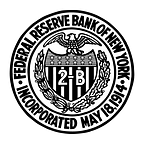Key Takeaways from President Williams’s Speech on the Economic Outlook and Monetary Policy
Judy DeHaven, CEO Communications
On Monday, October 3, New York Fed President John Williams spoke about inflation, monetary policy, and the economic outlook at the U.S. Hispanic Chamber of Commerce National Conference in Phoenix, Arizona.
He said:
“Clearly, inflation is far too high, and persistently high inflation undermines the ability of our economy to perform at its full potential.”
“The sources of high inflation are many and complex, and they stretch across the globe.”
“To help rein in demand to levels consistent with supply — and therefore bring inflation down — monetary policy needs to do its job. The FOMC is taking strong actions toward that end.”
In his remarks, President Williams said the Federal Reserve is committed to achieving its goals of maximum employment and price stability. “History teaches us that price stability is essential to achieving maximum employment over the longer term,” he said. “We at the Federal Reserve are therefore taking strong actions to restore price stability as a foundation for sustained economic prosperity.”
President Williams said that to better understand current high inflation, it is useful to think of it in terms of “three distinct layers of an onion.”
The first layer consists of prices of globally traded commodities, which experienced a surge in demand as the global economy rebounded after the pandemic. The second is made up of products such as durable goods, which have been affected by severe supply-chain disruptions. The third layer of the inflation onion consists of underlying inflation, which reflects the overall balance between supply and demand in the economy, and “therein lies our biggest challenge,” President Williams said.
The good news, he said, is that prices of many commodities are in retreat, and tighter monetary policy in the U.S. and around the world will continue to reduce demand, which should ease inflationary pressures. In addition, there has been significant improvement in global supply chains, which he expects to continue.
Bringing down underlying inflation will take longer, he said. But the Fed’s commitment to 2 percent inflation in the longer-run is now a bedrock principle, which is helping to keep inflation expectations well anchored.
At the same time, tighter policy is slowing consumer and business investment spending. As this continues, President Williams said he expects real GDP to be close to flat this year and to grow modestly in 2023.
As a result of slowing growth, President Williams said he anticipates the unemployment rate will rise from its current level of 3.7 percent to around 4–1/2 percent by the end of 2023.
“And with regard to inflation, I expect the combination of cooling global demand and steady improvements in supply to result in falling rates of inflation for goods that rely heavily on commodities, as well as for those that have been most affected by supply-chain bottlenecks,” he said. “These factors should contribute to inflation declining to about 3 percent next year.”
“Bringing down underlying inflation — the inner layer of the inflation onion — will take longer, but with monetary policy helping to restore balance between demand and supply, I see inflation moving close to our 2 percent goal in the next few years,” he said.
“Tighter monetary policy has begun to cool demand and reduce inflationary pressures, but our job is not yet done,” President Williams said. “It will take time, but I am fully confident we will return to a sustained period of price stability.”
The views expressed in this post are those of the contributing authors and do not necessarily reflect the position of the New York Fed or the Federal Reserve System. New York Fed content is subject to our Terms of Use.
